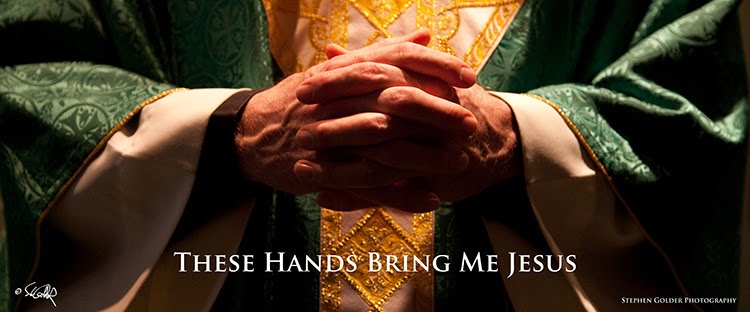Light is the photographer’s stock in trade, for without light and shadow, there are no images. Photographers spend a good deal of time “chasing the light,” looking for that perfect illumination that will allow them to preserve in an image what they see in their minds’ eyes. Too much light, hard and unforgiving, and the image is washed-out, drained and dull. Too little light and it remains forever unrealized. The interplay of subject and illumination is a delicate dance, the photographer both choreographer and musician.
This image was the suggestion of the priest whose hands are in the image. He spent most of an afternoon with us, going through the mass, step by step, permitting Steve to photograph him from every conceivable angle. As we approached the fractionation and elevation, he remarked that he liked to see the light reflected from the paten on the host.
It was the first time we had noticed the pattern of light on the elevated host, but it would not be the last. In this image, the light plays across the broken host, looking very much like the silhouette of a man; the host itself is recapitulated in the blurred lights in the background. Light plays through the fraction line of the host, to remind us that the resurrected Christ was first broken for us.
Since taking this image, we’ve seen a variety of reflections in the host at the elevation. One memorable morning, we saw the pattern of an angel in the light reflected from the paten, reminding us of the guardian at the tomb on Easter morning. But in the Eucharist, of course, the One we seek is indeed, right before us under the appearances of bread and wine if we look with the eyes of faith. And if we allow the play of the light of Christ on our lives, it becomes the perfect illumination that brings out the image and likeness of God in which we are made.









